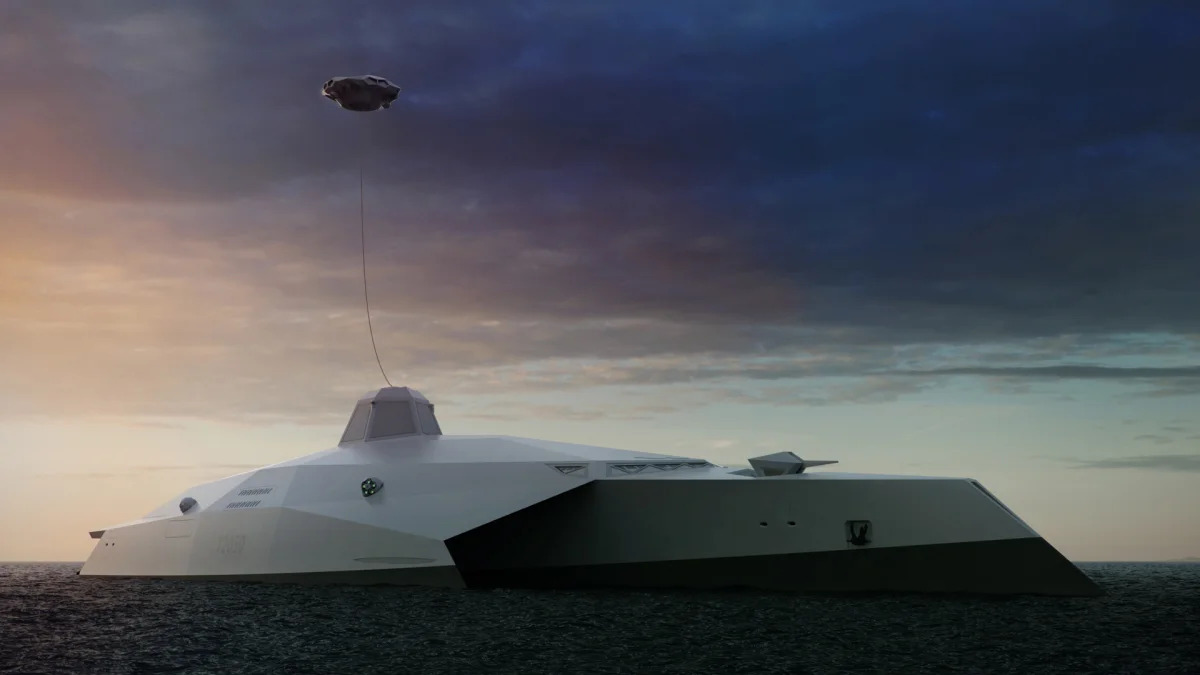This post is appearing on Autoblog Military, Autoblog's sub-site dedicated to the vehicles, aircraft and ships of the world's armed forces.
See that ocean-going Star Destroyer up there? That, according to British mission systems company Starpoint, is the future of naval warfare. The observant will note, of course, that its look has a lot more in common with traditional surface warships rather than the aircraft carriers that have dominated the seas since World War II.
It's called the Dreadnought 2050, and it's named after the British Royal Navy's HMS Dreadnought from 1905. Much like that heavily armed and armored warship, this design study is packed full of sea-going technology we can scarcely imagine today. It forgoes today's nuclear reactors in favor of a fusion generator, although if that still flummoxes scientists over the next three decades, Starpoint describes "highly efficient turbines driving silent electric motors to waterjets," as an alternative source of propulsion, according to a press release obtained by Defense One.
The new battleship's weapons complement is impressive, with a main railgun to deal with targets up to 125 miles away while microwave guns are for point defense. There are also "supercavitating torpedoes," which are able to tear through the water at 300 knots (345 miles per hour). Finally, there's a laser-equipped drone that floats above the ship. Speaking of drones, 3D printers will allow the ship to manufacture additional drones, which can be launched from a dedicated deck. That said, the lack of surface-to-air protection is interesting (perhaps the microwaves can be used against cruise missiles or enemy aircraft?).
The trimaran hull is made from advanced composites, and even features a floodable dock for launching and retrieving runabouts or landing parties. But the crème de la crème of this new ship is its bridge. Featuring Tony Stark-approved holograms, the Dreadnought 2050 cuts down on the number of crew required to no more than 100 sailors. The top speed would be around 50 knots (57 mph).
Check out the full batch of renderings from Starpoint, available in the gallery at the top of the page.
See that ocean-going Star Destroyer up there? That, according to British mission systems company Starpoint, is the future of naval warfare. The observant will note, of course, that its look has a lot more in common with traditional surface warships rather than the aircraft carriers that have dominated the seas since World War II.
It's called the Dreadnought 2050, and it's named after the British Royal Navy's HMS Dreadnought from 1905. Much like that heavily armed and armored warship, this design study is packed full of sea-going technology we can scarcely imagine today. It forgoes today's nuclear reactors in favor of a fusion generator, although if that still flummoxes scientists over the next three decades, Starpoint describes "highly efficient turbines driving silent electric motors to waterjets," as an alternative source of propulsion, according to a press release obtained by Defense One.
The new battleship's weapons complement is impressive, with a main railgun to deal with targets up to 125 miles away while microwave guns are for point defense. There are also "supercavitating torpedoes," which are able to tear through the water at 300 knots (345 miles per hour). Finally, there's a laser-equipped drone that floats above the ship. Speaking of drones, 3D printers will allow the ship to manufacture additional drones, which can be launched from a dedicated deck. That said, the lack of surface-to-air protection is interesting (perhaps the microwaves can be used against cruise missiles or enemy aircraft?).
The trimaran hull is made from advanced composites, and even features a floodable dock for launching and retrieving runabouts or landing parties. But the crème de la crème of this new ship is its bridge. Featuring Tony Stark-approved holograms, the Dreadnought 2050 cuts down on the number of crew required to no more than 100 sailors. The top speed would be around 50 knots (57 mph).
Check out the full batch of renderings from Starpoint, available in the gallery at the top of the page.










Sign in to post
Please sign in to leave a comment.
Continue